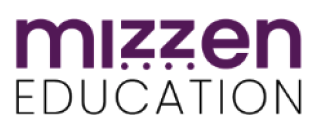5 Fun Ways to Power Arts Education in Afterschool Programs
Particularly during this time, arts programming is an invaluable way to engage children in a wide range of subjects — from science and math, to language literacy and digital media, to 21st century skills.
High-quality learning experiences in the arts can also support children’s social-emotional learning and well-being, and they can help young people navigate these uncertain times.
Family support is widespread for including the arts as part of a student’s well-rounded education. Yet many underfunded schools have been forced to shrink their student programs in music, drama and visual arts, and redirect funding and teaching resources to proficiency subjects like math and reading. This year, school closures due to COVID-19 have compounded the problem.
High-quality afterschool and summer learning programs can help narrow these gaps. Most programs already integrate some arts and crafts into their daily curriculum. But partnering with schools and community organizations on choosing and developing arts programming and including arts activities as part of “virtual backpacks” can open doors to a broader range of enrichment activities that excite, engage and educate students — and even reveal students’ hidden talents.
Here are some tips to consider when choosing an expanded arts curriculum for your afterschool program, including some ideas for remote learning:
1) Reach out to local performance arts groups, dance studios, university drama departments and arts clubs and let them know you’re looking to offer expanded arts enrichment to the kids you serve. See if any of these local organizations are willing to partner on online instruction or demonstrations, or host an evening film screening or streamed student production — one parents can also attend.
2) Plan to host a student art show at the end of the semester or the end of the year. Give students the option to work on their display pieces throughout the semester, so they have several pieces to choose from and ample time to work on larger pieces. Offering children the chance to show and gain recognition for their art can be a tremendous source of self-esteem and motivation to work toward a goal. If you can’t gather in person, consider hosting a student art show or gallery walk virtually.
3) Experiment with new mediums beyond what kids are exposed to during the regular school day. If music education isn’t offered regularly, for example, see if you can create an afterschool music class with the help of parents, students, local musicians and community organizations. The League of American Orchestras is one place to look to for inspiration. Through grants, the League helps fund student orchestras in cities across the U.S.
4) Combine physical movement with learning to strengthen cognitive learning. Dance, in particular, benefits the brain, according to the National Dance Education Organization (NDEO). NDEO reports that dance can help students become more aware of their physical presence, spatial relationships, breathing, rhythm and emotions. It can also provide a valuable outlet for social and cultural self-expression.
Look for ways to bring multicultural dance to your school through live demonstrations from local dance groups or virtual dance classes and invite students to participate in selecting the types of dance groups they would like to see.
5) Work with teachers at schools you serve to help reinforce the importance of learning through art. Find out what major learning initiatives might be underway and see if you can support these initiatives through “stealth learning.” Examples of stealth learning techniques might be incorporating geometry in drawing, making paper and mixing paints to learn about science and chemistry, and participating in plays or watching live performances to learn about history.
The possibilities — as well as the benefits — for integrating arts education in afterschool programs are nearly endless. In addition to providing much-needed arts education, integrated arts programming can be a powerful tool for attracting young people to join afterschool programs. Integrated arts programming can just as powerfully build community and increase parent involvement — setting the stage for long-term academic success.
Reference:
Bonbright, Jane, Shannon, Dooling and Karen Bradley. "Evidence: A Report on the Impact of Dance in the K-12 Setting." Silver Springs: National Dance Education Organization, 2013. Accessed September 23, 2020, https://www.ndeo.org/content.aspx?page_id=22&club_id=893257&module_id=153248#:~:text=NDEO%20researchers%20undertook%20a%20review,to%20the%20Nation%20(Bonbright)

